Share of the consumer mind (SCM) is #1 on my list of competitive advantages. It’s a Warren Buffett phrase to describe how certain businesses can capture consumers. Where consumers just keep buying their products, even when cheaper equivalents are available.
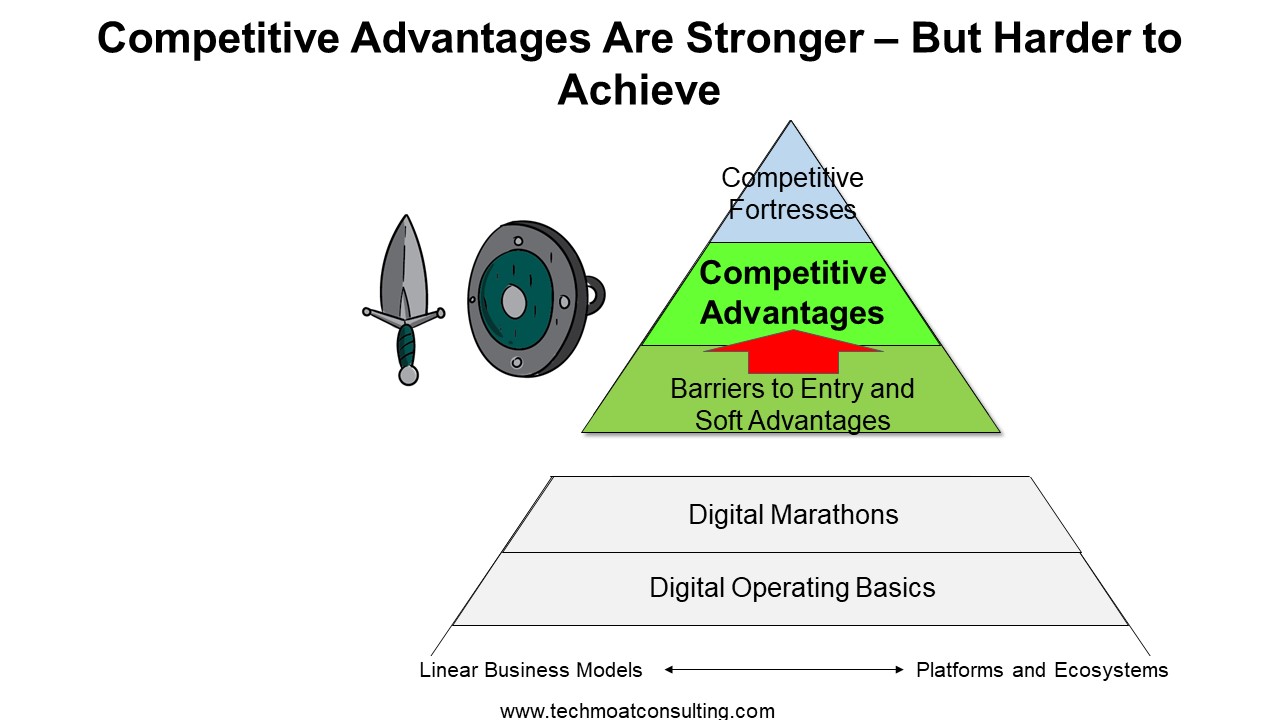
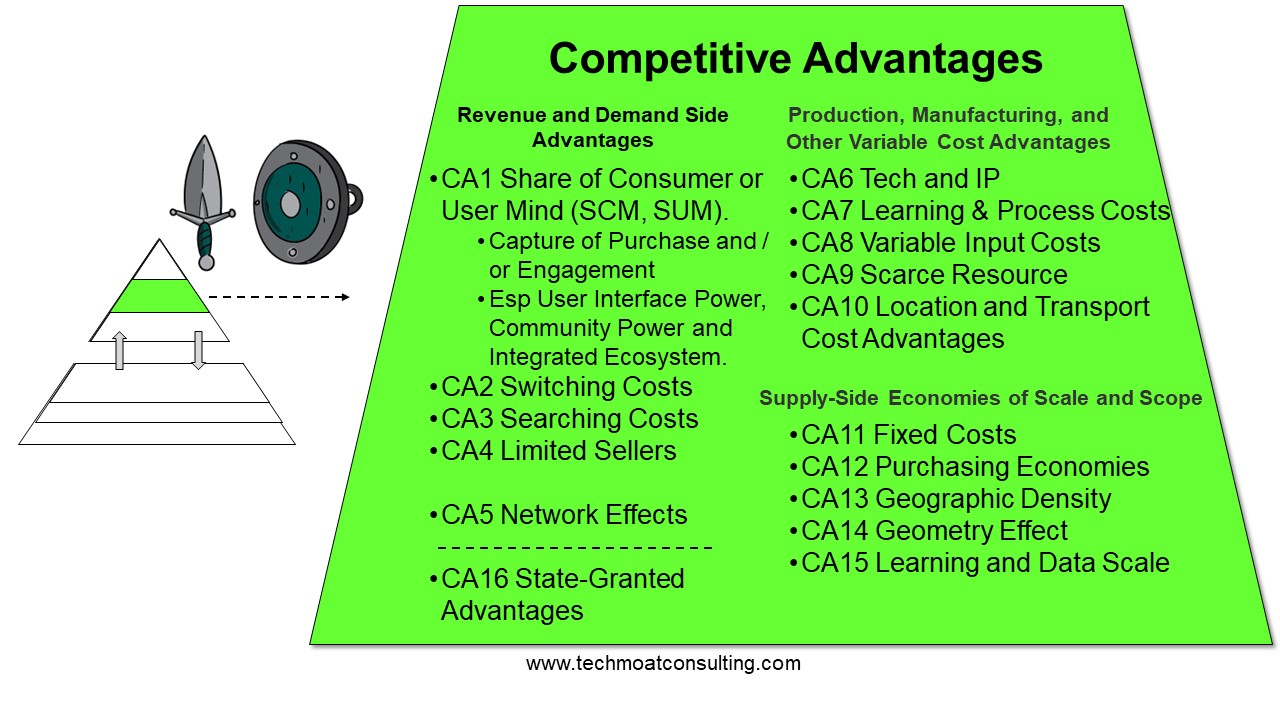
In the traditional business world, think Coca Cola and Harley Davidson (before it went woke). Here is my standard definition.
- CA1: Share of the Consumer Mind (SCM), Share of the User Mind (SUM) and Purchase vs. Engagement Capture. This category contains lots of sub-types such as buying habits, branding, and emotional attachment. And it is not just for consumers and B2B customers but also for other user groups on platforms.
Here are some standard questions for checking share of the consumer mind, which is a revenue and/or demand-side advantage:
- Can this company charge a premium versus competitors with similar products / services?
- How much? What percent?
- Usually this shows up in higher prices, higher gross profits and/or unused pricing power.
- Can this company charge a premium versus competitors with lower quality or less differentiated products / services?
- How much? What percent?
- Usually this shows up in higher prices, higher gross profits and/or unused pricing power.
- What percent of sales is repeat business? Is there a backlog? Are there long-term contracts? All of these indicate repeat business.
- How sustainable or stable is demand? Is it reliable for 0-3 years? 3-5? 5-10?
You can read more about this here.
As a competitive advantage versus rivals, SCM can show up as:
- Higher gross margins
- Repeat business
- Stable market share (even when attacked).
***
Ok. That’s the basics.
But what I’ve been thinking a lot about is how share of the consumer mind is changing in an increasingly digital world.
- In an age of endless products and services, demand side competitive power is more important than supply-side power.
- Consumer behavior is changing rapidly with new digital tools and services.
- We keep seeing examples of shockingly powerful demand side capture by digital businesses. For example, TikTok is shockingly addictive. Facebook has captured most of the world. And so on.
So, there are two questions:
- How is digital changing consumer behavior?
- When does this rise to the level of Share of the Consumer Mind?

These two articles have my thinking thus far.
My Checklist for Non-Rational Consumer Behavior
For consumers, I think about rational vs. non-rational behavior. And I am generally looking for as much non-rational behavior as possible.
Rational Consumer Behavior
This is the consumer is looking at a purchase logically. What are the benefits? What is the total cost? What are the alternatives? It’s a very cool-headed assessment of costs and benefits.
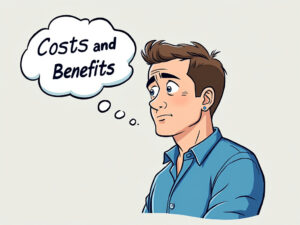
I don’t like this in products. It makes it too hard to charge a lot more for similar products. Or to get deep loyalty.
Generally, I want to avoid mostly rational behavior unless it is a critical product or a competitive / strategic purchase. For example, in low-price rational purchases (such as cheese, shoes, toothbrushes), you can win but it’s tough. Plus, you are often exposed to generics. It’s better if your competitive power is elsewhere (tech or distribution).
For higher price rational purchases (such as cars), there is usually very little demand side power. Brands are not as big a deal as people think. Usually a very tough market.
So, I’m looking for products that people really love. Irrationally. Or that appeal to their emotions and feelings, rather than just utility.
So, in my checklists, I always separate the rational from the non-rational behavior. I start with the rational approach, asking:
- What does the customer care about?
- What is the process for buying and usage?
- How much engagement? One way vs. two way?
- Is there a community aspect?
- How much of the purchase and usage is Rational and Thoughtful?
***
Then I look for non-rational aspects. And I use the acronym CHiMEAC.
C – Chemical Consumer Behavior
This is when we talk about products with nicotine and caffeine. And sugar. Any product or service that results in a chemical “hit” for the user. Sugar is going into almost everything in the grocery store these days. In increasing amounts. Lots of digital products are based on dopamine. We’re looking at anything that results in a change in body chemistry. And this is usually in a mild form. Think caffeine, not heroin.

H – Habit Formation in Consumers
There are good books written about how habits created in the human brain, which appears to involve the creation of new pathways over time. It appears to be an evolutionary adaptation to conserve energy. Think about how much thought it requires to drive somewhere new for the first time. Now compare to how you can drive home from work without even thinking. Habits formation lets us do certain daily activities with minimal thought or energy.
Lots of businesses are really trying to build habits into your life and your brain. There’s a good book on this called The Power of Habit: Why We Do What We Do in Life and Business
The short version is you want to look for Cues -> Process -> Reward. That is what creates a habit and imprints a craving. Some examples.
- You feel nervous (that’s a cue that happens naturally). So, you buy a cigarette (that’s an action). And then you get a reward (that nicotine hit in the first puff of a cigarette. And a relaxed feeling).
- When you wake up, you feel a film on your teeth (a natural cue). So, you brush your teeth (action). And get a reward (that minty burning sensation). Note: they add the chemical to give you that minty, fresh feeling to create the reward. It has nothing to do with cleaning your teeth.
For habit formation, it’s better if the frequency of usage is high. Drinking coffee every morning is good. But smoking 20 cigarettes per day is much better. Note: Habit formation combines nicely with chemical.
It’s also better if the cues are natural occurring. You walk past the 7-11 and you feel the pull to go in and get a treat.
We see habit formation all the time in the digital world. People check their social media all the time and see if they got views and likes (that’s the reward).
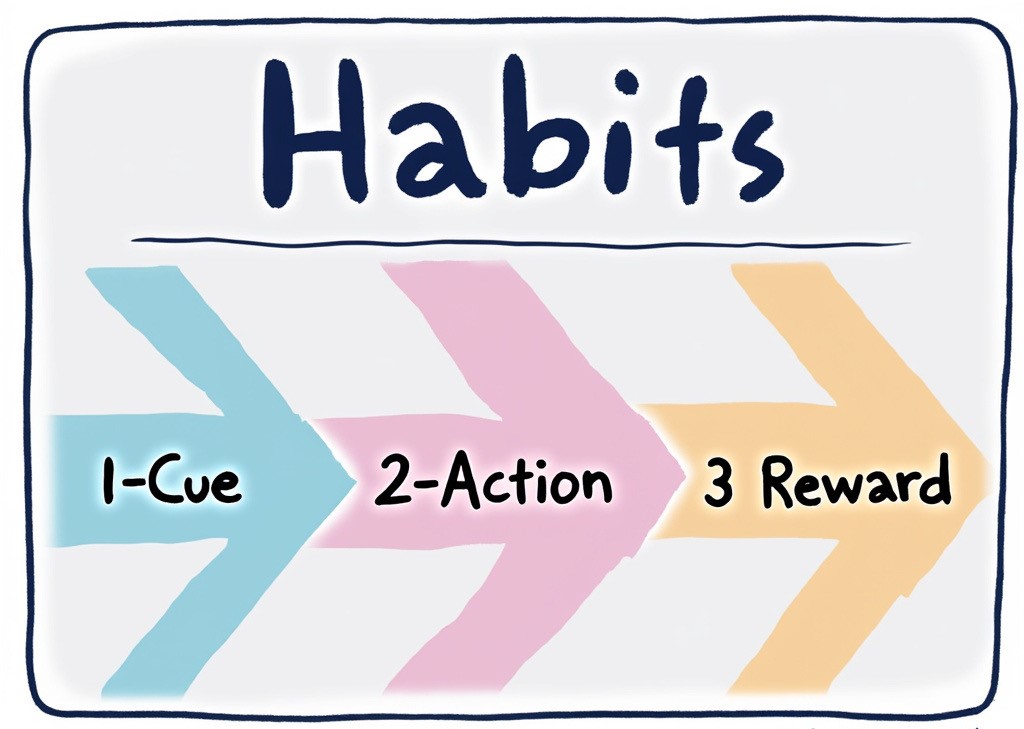
M – Mindless Purchasing
I like this category.
This is when you buy something without really thinking at all. Your rational brain doesn’t even engage. These are usually very small purchases. Such as buying ballpoint pens. Your pen runs out and you just walk into a store and grab a few off the counter. And people almost always buy Bic pens (a good business).
Have you ever even thought about how you buy pens before I just mentioned it? Have you ever thought of what brand?
Such low-cost, mindless purchases can often have fairly impressive gross margins. Bic does. Nobody notices the 30% gross margin on a 30-cent purchase. And it’s hard to get people to switch brands because they aren’t thinking at all.
These products (pens, lighters, match books. ketchup) are often legacy brands that have been around for decades. There are lots of them in the grocery store.

E – Emotional Purchasing
This is a big bucket of non-rational consumer behavior.
This is when the buyer and/or user gets some sort of emotional impact from a product. It can be from using the product. It can often just be from the purchasing. It can even be from anticipation of buying. People like to shop as an activity.
The most common emotion is pleasure and happiness That’s Starbucks, music, television, soda, shopping, and Marlboro. These are usually discretionary purchases. Often they are small treats (“let’s stop for ice cream”). Toys for kids can be powerful here. Young boys really want Thomas the Train.
But it doesn’t have to be happiness. Horror movies scare you. News is mostly about stimulating outrage. Comedy is about laughing. Note: entertainment is usually a purely emotional product.
I also put fan behavior in this category, which can be about emotion. But also, about self-expression and identity. More powerful fan behavior can be “fanboy and enthusiasts”. Fan behavior can be stable and predictable like having a favorite whiskey you always order. Or it can be changing like designer fashion (each season’s items loses value fast).

A – Aspirational Products
These are luxury indulgences Think BMWs, big homes, and designer furniture. This can be about achievements and fulfilling an aspiration. It can be about showing status to others.
I really like affordable luxuries as a category. That’s the premium whiskey you buy on special occasions. Or the iPhone a consumer saved up for.

C – Critical or Competitive Purchases
If mindless is about not having your brain engaged, critical purchasing is when your brain 110% engaged. When you are buying something you perceive as critical, such as birth control, milk that is safe for your baby, 3M masks during Covid, etc.
In these cases, the product and usually the brand become critical. There is a perceived risk of using a product with lesser quality. This can be a pretty good type of purchasing. Nobody argues price with their heart surgeon.
A similar phenomenon is competitive purchasing. This is when customers are competing against each other to get the best product. The example I think about is Chinese parents buying test preparation services for their kids. It’s not just that the test preparation has to be good. It has to be better than what other parents are buying. Or at least as good. It’s competitive purchasing.

P – Psych Override and the Righteous Mind
Is there an over-riding psychology effect that puts the customer into their “righteous mind”?
This is my Jonathan Haidt category. In his book the Righteous Mind: Why Good People Are Divided by Politics and Religion, he details 6 triggers in the human brain that over-ride rationality.
He argues that morality “is at least six things” and that “[religion and politics are] … expressions of our tribal, groupish, righteous nature.” He compares the six aspects that people use to establish morality and take into consideration when making judgment to six taste receptors in the mouth. These aspects of morality are defined as:
- Care / harm
- Fairness / cheating
- Loyalty / betrayal
- Authority / subversion
- Sanctity / degradation
- Liberty / oppression
When I see people buying supplements at the GNC store and people paying high prices for organic, I think “sanctity / degradation”. There is a righteous psychology related to cleanliness vs. disgust.
And you can see politics and religions impact consumer purchasing behavior all the time.
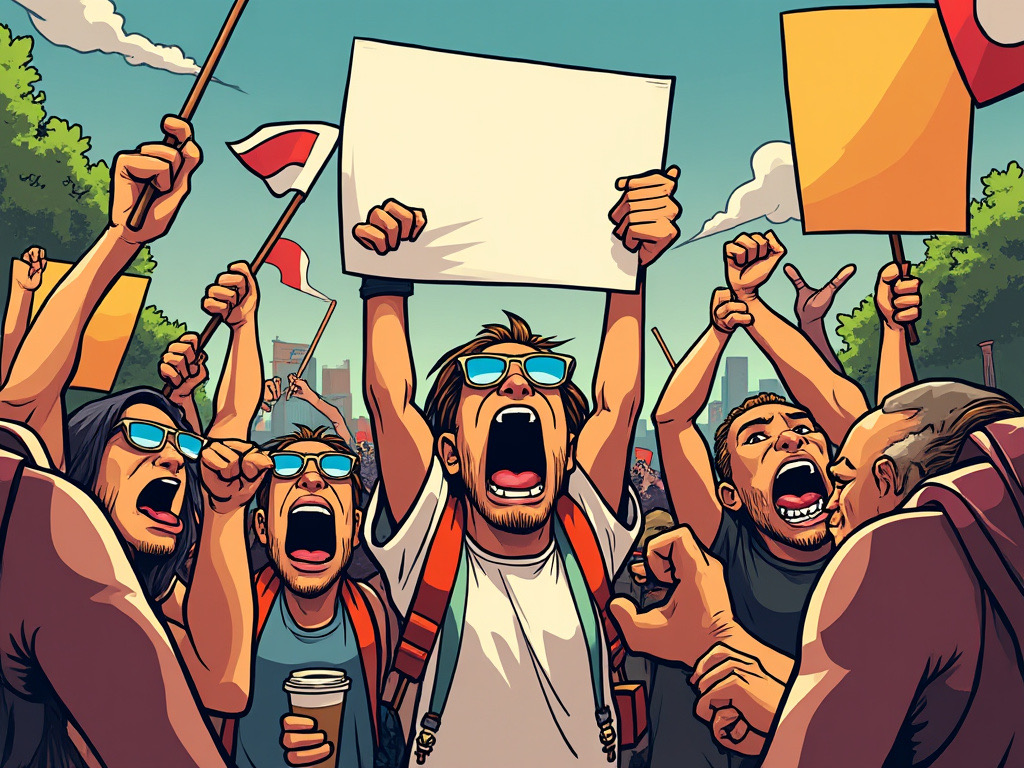
***
That’s my list for non-rational consumer behavior. It’s pretty simplistic. But I find it helpful. And it’s easy to run through quickly. I usually try to identify the major drivers of a behavior. Then I look at how they are being impacted by digital tools.
My Checklist: Putting It All Together
My list is:
- What does the customer care about?
- What is the process for buying and usage?
- How much engagement? One way vs. two way?
- Is there a community aspect?
- Non-Rational Aspects? CHiMEAC. How much?
- How does this product rate in terms of consumer power? On a scale of 1-10?
- Is it a 10x solution versus existing offerings?
- Does it rise to the level of share of the consumer mind?
That’s pretty much it.
In Part 2, I’ll go some digital aspects.
Cheers, Jeff
———
Related articles:
- How to Think About Web 3.0 Business Models (1 of 2) (Asia Tech Strategy – Daily Article)
- Platform-Protocol Hybrids and Why DeFi is the Center of Web 3.0 (2 of 2) (Asia Tech Strategy – Daily Article)
From the Concept Library, concepts for this article are:
- CA1: Share of Consumer Mind, Share of User Mind
- B2C Customer View: Non-Rational Consumer Behavior
From the Company Library, companies for this article are:
- n/a
———
I am a consultant and keynote speaker on how to accelerate growth with improving customer experiences (CX) and digital moats.
I am a partner at TechMoat Consulting, a consulting firm specialized in how to increase growth with improved customer experiences (CX), personalization and other types of customer value. Get in touch here.
I am also author of the Moats and Marathons book series, a framework for building and measuring competitive advantages in digital businesses.
This content (articles, podcasts, website info) is not investment, legal or tax advice. The information and opinions from me and any guests may be incorrect. The numbers and information may be wrong. The views expressed may no longer be relevant or accurate. This is not investment advice. Investing is risky. Do your own research.
